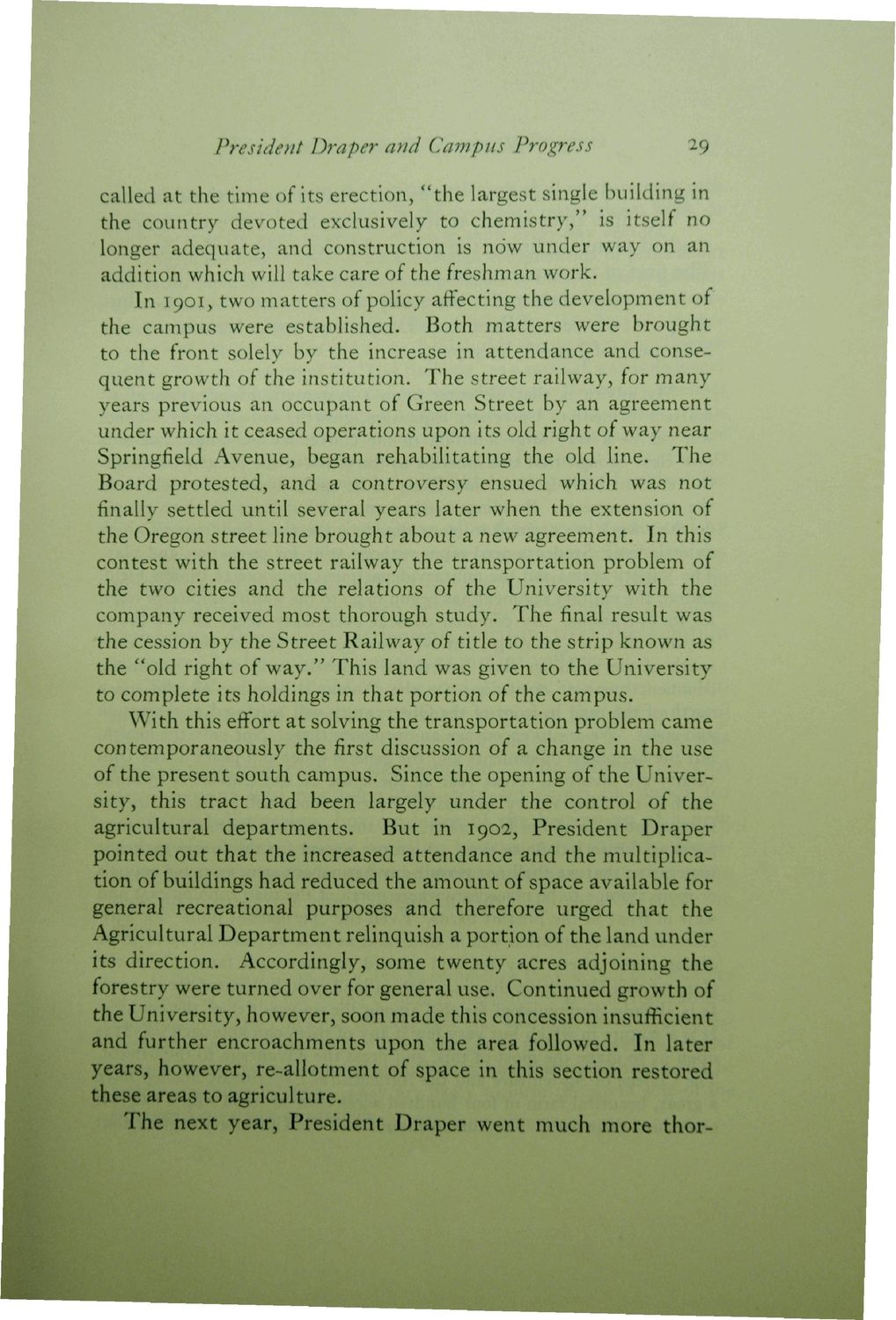| |
| |
Caption: Book - 30 Year Master Plan (Tilton & O'Donnell)
This is a reduced-resolution page image for fast online browsing.

EXTRACTED TEXT FROM PAGE:
President Draper and Campus Progress 29 called at the time of its erection, "the largest single building in the country devoted exclusively to chemistry," is itself no longer adequate, and construction is now under way on an addition which will take care of the freshman work. In 1901, two matters of policy affecting the development of the campus were established. Both matters were brought to the front solely by the increase in attendance and consequent growth of the institution. The street railway, for many years previous an occupant of Green Street by an agreement under which it ceased operations upon its old right of way near Springfield Avenue, began rehabilitating the old line. The Board protested, and a controversy ensued which was not finally settled until several years later when the extension of the Oregon street line brought about a new agreement. In this contest with the street railway the transportation problem of the two cities and the relations of the University with the company received most thorough study. The final result was the cession by the Street Railway of title to the strip known as the "old right of way." This land was given to the University to complete its holdings in that portion of the campus. With this effort at solving the transportation problem came contemporaneously the first discussion of a change in the use of the present south campus. Since the opening of the University, this tract had been largely under the control of the agricultural departments. But in 1902, President Draper pointed out that the increased attendance and the multiplication of buildings had reduced the amount of space available for general recreational purposes and therefore urged that the Agricultural Department relinquish a portion of the land under its direction. Accordingly, some twenty acres adjoining the forestry were turned over for general use. Continued growth of the University, however, soon made this concession insufficient and further encroachments upon the area followed. In later years, however, re-allotment of space in this section restored these areas to agriculture. The next year, President Draper went much more thor-
| |